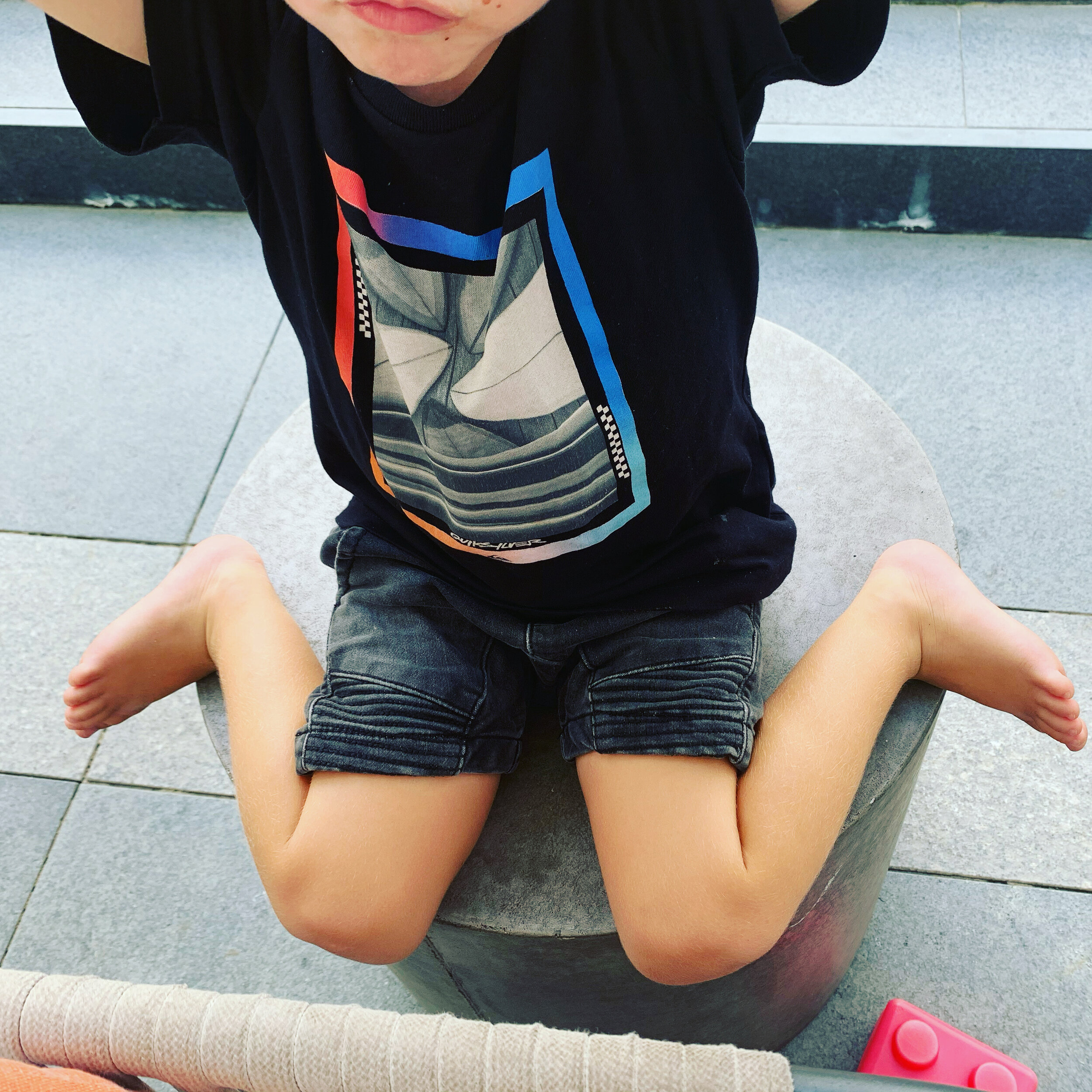The dangers of sitting in “W”..
As a Podiatrist I am well educated on the issues with the “W” sitting position in children. As a Mum and Aunty, I’ve had first hand experience with the parenting vigilance that it takes to correct it. My nephew is super fond of this position and even at 4 years old we still occasionally find that he needs reminding to adjust his position.
Interestingly the “W” position is fairly common in children with slightly displaced hips as it’s a position which feels super comfortable and stable for them. So if that’s the case and they seem comfortable in it……why am I so concerned about it?
Here is why:
“W” sitting position
When a child is seated in the “W” position their large leg bones rotate inward. In this internally rotated position, the head of that thigh bone doesn’t sit neatly in the hip socket where it is supposed to sit for growth and development. In some cases, especially those that already have mild hip dysplasia, this can lead to hip dislocation!
That same internal rotation of the large leg bone can end up placing the child at risk of muscle tightness. Mainly affecting the hamstrings and hip adductor muscles. Muscle tightness can change walking style as well as hip and lumbar-thoracic position.
The ‘W’ position can delay their motor skills. When a child is sitting in a “W” position they have difficulty moving across their tummy and reaching side to side. It’s important for our children to rotate through and around that tummy area in order to develop fine motor skills such as handwriting.
When a child consistently sits in the W position the pelvis rotates anteriorly (forward). This position may weaken the child’s abdominal muscles and core strength.
Ok… so that’s a lot above hey! And maybe your child sits like this or you know a child that does. Don’t worry about what has been happening, lets focus on making change.
If your child is of an age where you can discuss the “W” position with them, then I would encourage you to do so… for example:
“Sweetheart you know how you love to sit in that “W” position where your feet point out? Well now that you are becoming a big boy/girl we need to start to change that to crossing your legs so that you’re ready for school. I can help you by letting you know when I see it. Let’s choose a cool word I can say to you that’s secret code for quickly cross your legs.” It could be Spiderman or unicorn, Avengers or even Paw Patrol, the list is endless! This can be a more discreet and less stressful way of tackling the issue.
With babies and toddlers, parents should physically change the child’s position as they see it. Gently rotate the leg out of the “W” position by bringing the foot and leg toward the midline of the body. To help your child feel more stable you can widen the sitting position by pushing the thigh out and away from the body (think of how you would sit cross legged, without actually crossing your legs). Make sure grandparents, babysitters, and day care supervisors etc. also know to correct this position when they see it.
The sooner you begin implementing change in this position the easier it is. As children get older this position can become habit like in nature and therefore becomes a much harder task for parents to correct. So don’t delay! As always, if you have any further questions or queries just pop to my contacts page and send me an email. X

